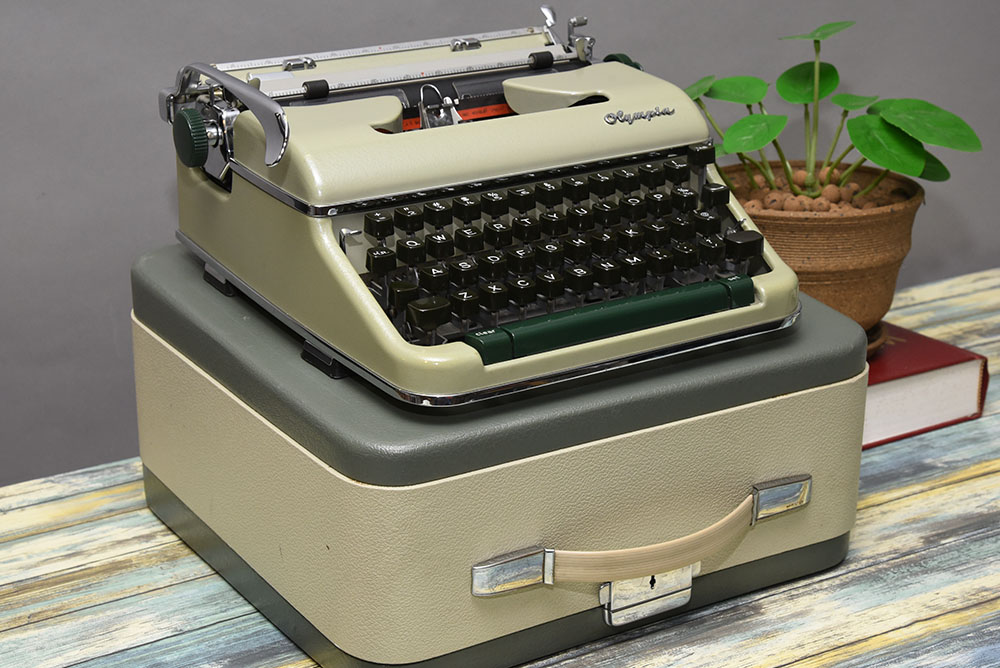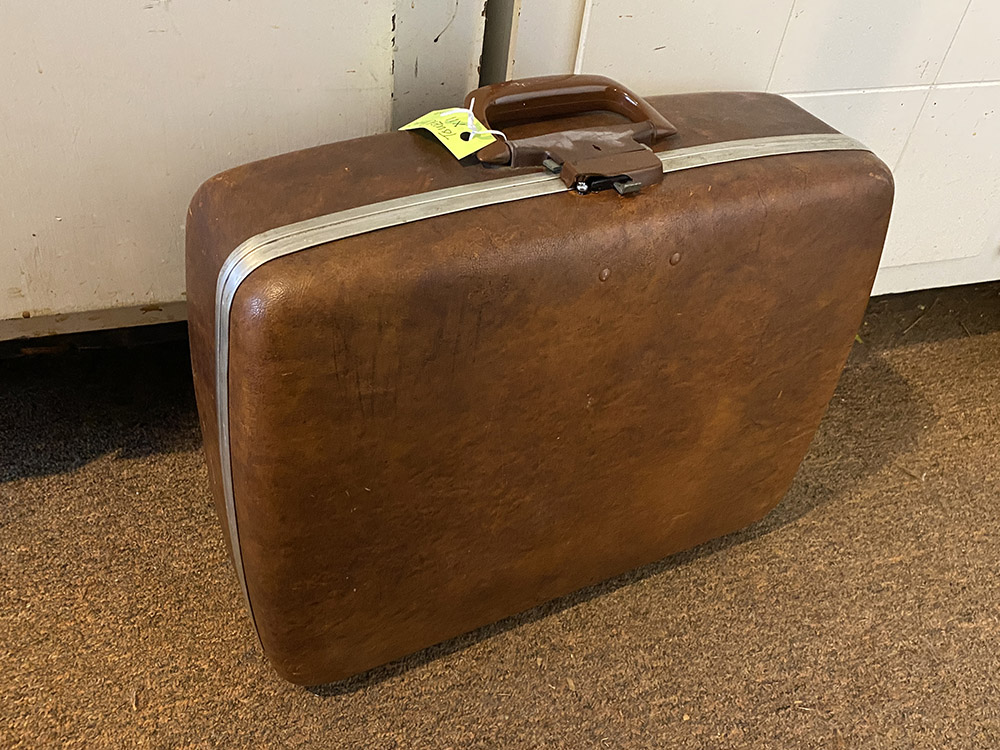- mikeytap
- Speed Champion
 Offline
Offline 
- From: Georgia, USA
- Registered: 25-12-2021
- Posts: 346
Re: Recent Acquisitions Thread
robmck wrote:
Yes, the Sterling and Silent are really similar. I just found my notes when I compared the ones I had ('49 Silent and '52 Sterling):
- The Silent has paper fingers, the Sterling doesn't.
- The Silent has 3 paper bail rollers, the Sterling has 2.
- The Silent has felt panels on all body panels, the Sterling has felt only on the ribbon cover.
- The Silent has a user removable platen, while the Sterling requires you to remove a screw to get the platen out.
I'd forgotten about the paper fingers and bail rollers when I posted my last question. Given that, it looks like the Tower Tabulars are the same as SC Sterlings.
I think you've nailed the differences. I did recall that the Silents had the easily removable platen like the later Silent Supers. Forgot to compare the bail rollers and paper fingers. One of the best typers I had was a sterling that I gave away. Seems the ones that saw some use feel a little looser and faster to me than unused ones. I think a lot of typewriters were given as school graduation presents that never left their cases.
- Be kind
- Herik Beheran
- New Member
 Offline
Offline - Registered: 26-8-2023
- Posts: 13
Re: Recent Acquisitions Thread
I never had a selectric, I didn't dare buy one for fear of not being able to get it working. I saw it as a very complex typewriter.
But I found this selectric 72. These are the seller's photos, the machine will arrive to me in a few days. It appears to be in very good condition and the YouTube channel "Phoenix Typewriter" has a lot of information on Selectric typewriter repair. So I encouraged myself with this machine, I hope I have luck.



- overwood
- Speed Champion
 Offline
Offline - From: Midwest
- Registered: 10-11-2018
- Posts: 287
Re: Recent Acquisitions Thread
I found a spotless 1968 SM9 at Goodwill today for 19.99, so I snatched it up. I already have a 66 and a 67 and I'm not a huge fan of either one, but with it's almost-black keys I like the appearance of this one better than the others with their white keys. I wasn't even sure it was an SM9 till I got it home.
Unfortunately they threw the case out earlier this morning, and the garbage truck had already hauled it away or I would have been dumpster diving. I suppose it was probably one of the disabled persons who work in back that just didn't know any better, so I can't be too upset. Maybe someday I'll stumble on an empty case.
- Uwe
- Moderator
 Offline
Offline 
- From: Toronto, Canada
- Registered: 12-3-2013
- Posts: 4,410
Re: Recent Acquisitions Thread
Hard to digest that a travel case (along with its typewriter) managed to survive for over half a century, and then met such an inglorious end. ![]()
The pronoun I has always been capitalized in the English language for more than 700 years.
- •
- overwood
- Speed Champion
 Offline
Offline - From: Midwest
- Registered: 10-11-2018
- Posts: 287
Re: Recent Acquisitions Thread
I know, it's almost unbelievable that they threw it out that very morning. Good grief.
I think my solution will be to give away one of my other two SM9's without a case, so I'll still have 2 cases and 2 SM9's.
- robmck
- Speed Champion
 Offline
Offline - From: Seattle, WA
- Registered: 31-1-2022
- Posts: 389
Re: Recent Acquisitions Thread
Spotted this Scottish 1955 Remington 10 Noiseless on SGW. Before and after shipping images below. Sadly, they put it in a big box with not enough material, and it landed on my doorstep sideways. Looks like the line advance lever got bent inwards and collided with the ribbon cover. I'm sure I'll be able to straighten the lever out. Touching up crinkle paint may be harder (though, I have a dim message that Pete E has done some miracles in this regard on another message in this forum).
Shipping disappointments aside, this is an interesting machine. Super quiet like it says on the box - no impression impact, just the noise of linkages moving. Inside, there is sound proofing felt and rubber bushings, buffers, etc everywhere. And it's built like a tank, too. Of course, all that will make a challenge of cleaning out all the goo and cat hair that has collected inside.
It also looks like, though it's a carriage shift, the escapement is bolted to the frame, thus the axle through the starwheel slides with the carriage.
Haven't yet figured how to strip it down yet. I had first thought all those body panels would come off like other mid-century models (and like the '54 service manual shows), but only the back and ribbon cover seem to come off - the rest of that exterior is a single cast piece, with the motion stops and many other elements bolted to it. It appears to serve as the frame itself, like pre-war standards, but unlike those early standards, there are no holes to reach through inside. The '43 and `52 shop manuals describe how to disassemble / disembowel the machine into components, but don't really describe how to crack it open for a little maintenance.
Looking forward to learning about this machine and getting it humming again.
(before shipping)
(after shipping)
- Uwe
- Moderator
 Offline
Offline 
- From: Toronto, Canada
- Registered: 12-3-2013
- Posts: 4,410
Re: Recent Acquisitions Thread
It's a really nice model. I can't say that I've ever come across one locally otherwise I would an example; I'd love to line it up with the various -Riter models of the period.
The pronoun I has always been capitalized in the English language for more than 700 years.
- •
- mikeytap
- Speed Champion
 Offline
Offline 
- From: Georgia, USA
- Registered: 25-12-2021
- Posts: 346
Re: Recent Acquisitions Thread
I couldn't pass up the price on this Olympia SM4 in perfect condition. I like the pale green color. They must have produced a quite a lot of SM4s and there is amazing consistency from one to the next. 
- Be kind
- Pete E.
- Typewriter Talk Elite
 Offline
Offline 
- From: Idaho - USA
- Registered: 23-6-2020
- Posts: 2,533
Re: Recent Acquisitions Thread
Mike,
That's lovely.
That colour is quite the chameleon...hue changing depending on the lighting conditions.
- mikeytap
- Speed Champion
 Offline
Offline 
- From: Georgia, USA
- Registered: 25-12-2021
- Posts: 346
Re: Recent Acquisitions Thread
Here is a Tower Quiet Tabulator and it's a great typer. Made for Sears by Smith Corona in 1956. Because of the chrome paper guides and the 3 rollers on the bar I would say it is basically a Silent. The tan color seems to have just a hint of green in it, or maybe I'm just willing it to be so. 
- Be kind


